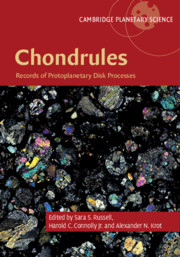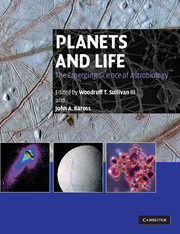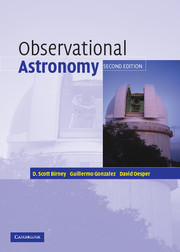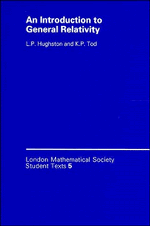Refine listing
Actions for selected content:
17002 results
4 - Composition of Chondrules and Matrix and Their Complementary Relationship in Chondrites
- from Part I - Observations of Chondrules
-
-
- Book:
- Chondrules
- Published online:
- 30 June 2018
- Print publication:
- 19 July 2018, pp 91-121
-
- Chapter
- Export citation
9 - 26Al–26Mg Systematics of Chondrules
- from Part I - Observations of Chondrules
-
-
- Book:
- Chondrules
- Published online:
- 30 June 2018
- Print publication:
- 19 July 2018, pp 247-275
-
- Chapter
- Export citation
Contents
-
- Book:
- Chondrules
- Published online:
- 30 June 2018
- Print publication:
- 19 July 2018, pp v-vi
-
- Chapter
- Export citation
15 - Formation of Chondrules by Shock Waves
- from Part II - Possible Chondrule-Forming Mechanisms
-
-
- Book:
- Chondrules
- Published online:
- 30 June 2018
- Print publication:
- 19 July 2018, pp 375-399
-
- Chapter
- Export citation
5 - The Chondritic Assemblage
- from Part I - Observations of Chondrules
-
-
- Book:
- Chondrules
- Published online:
- 30 June 2018
- Print publication:
- 19 July 2018, pp 122-150
-
- Chapter
- Export citation
Part II - Possible Chondrule-Forming Mechanisms
-
- Book:
- Chondrules
- Published online:
- 30 June 2018
- Print publication:
- 19 July 2018, pp 341-436
-
- Chapter
- Export citation
13 - Formation of Chondrules by Planetesimal Collisions
- from Part II - Possible Chondrule-Forming Mechanisms
-
-
- Book:
- Chondrules
- Published online:
- 30 June 2018
- Print publication:
- 19 July 2018, pp 343-360
-
- Chapter
- Export citation
Contributors
-
- Book:
- Chondrules
- Published online:
- 30 June 2018
- Print publication:
- 19 July 2018, pp vii-x
-
- Chapter
- Export citation
Part I - Observations of Chondrules
-
- Book:
- Chondrules
- Published online:
- 30 June 2018
- Print publication:
- 19 July 2018, pp 9-340
-
- Chapter
- Export citation
2 - Multiple Mechanisms of Transient Heating Events in the Protoplanetary Disk
- from Part I - Observations of Chondrules
-
-
- Book:
- Chondrules
- Published online:
- 30 June 2018
- Print publication:
- 19 July 2018, pp 11-56
-
- Chapter
- Export citation
11 - The Absolute Pb–Pb Isotope Ages of Chondrules
- from Part I - Observations of Chondrules
-
-
- Book:
- Chondrules
- Published online:
- 30 June 2018
- Print publication:
- 19 July 2018, pp 300-323
-
- Chapter
- Export citation
12 - Records of Magnetic Fields in the Chondrule Formation Environment
- from Part I - Observations of Chondrules
-
-
- Book:
- Chondrules
- Published online:
- 30 June 2018
- Print publication:
- 19 July 2018, pp 324-340
-
- Chapter
- Export citation
Copyright page
-
- Book:
- Chondrules
- Published online:
- 30 June 2018
- Print publication:
- 19 July 2018, pp iv-iv
-
- Chapter
- Export citation
6 - Vapor–Melt Exchange
- from Part I - Observations of Chondrules
-
-
- Book:
- Chondrules
- Published online:
- 30 June 2018
- Print publication:
- 19 July 2018, pp 151-174
-
- Chapter
- Export citation
8 - Oxygen Isotope Characteristics of Chondrules from Recent Studies by Secondary Ion Mass Spectrometry
- from Part I - Observations of Chondrules
-
-
- Book:
- Chondrules
- Published online:
- 30 June 2018
- Print publication:
- 19 July 2018, pp 196-246
-
- Chapter
- Export citation

Chondrules
- Records of Protoplanetary Disk Processes
-
- Published online:
- 30 June 2018
- Print publication:
- 19 July 2018

Planets and Life
- The Emerging Science of Astrobiology
-
- Published online:
- 28 May 2018
- Print publication:
- 13 September 2007
-
- Textbook
- Export citation

Observational Astronomy
-
- Published online:
- 28 May 2018
- Print publication:
- 29 June 2006
-
- Textbook
- Export citation

Textbook on Spherical Astronomy
-
- Published online:
- 28 May 2018
- Print publication:
- 07 July 1977
-
- Textbook
- Export citation

An Introduction to General Relativity
-
- Published online:
- 28 May 2018
- Print publication:
- 25 January 1991
-
- Textbook
- Export citation
